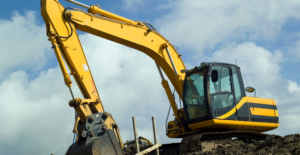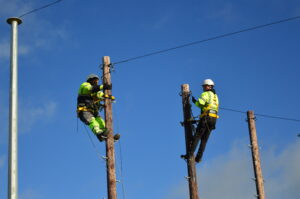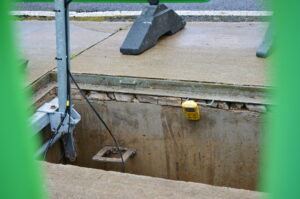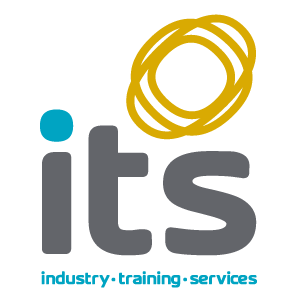A Journey through Confined Spaces Training
Picture this scenario: a narrow, dimly lit confined space with limited ventilation, pipes and cables snaking through the area, and a sense of unease lingering in the air. Welcome to the world of confined spaces. These challenging environments pose significant risks to workers, making confined spaces training an essential component of workplace safety.
First, let’s define what we mean by a confined space. According to the Occupational Safety and Health Administration (OSHA), a confined space is any space that is large enough and configured in such a way that an employee can bodily enter and perform work, has limited or restricted means for entry or exit, and is not designed for continuous employee occupancy. Examples of confined spaces include tanks, vessels, silos, storage bins, hoppers, vaults, pits, manholes, tunnels, equipment housings, ductwork, and pipelines.
Hazards Requiring Emergency Rescue in Confined Spaces
The very nature of confined spaces presents a multitude of hazards that can jeopardize the well-being of workers. Some common hazards include:
- Lack of oxygen: In confined spaces, oxygen levels can rapidly deplete due to the presence of toxic gases or displacement by other gases, making the atmosphere unfit for breathing.
- Toxic atmospheres: Confined spaces may contain hazardous substances like chemicals, fumes, or gases, which can lead to respiratory issues, poisoning, or even asphyxiation.
- Engulfment and entrapment: Workers can get trapped or engulfed by materials, such as loose soil, grain, or flowing liquids, which may result in suffocation or crushing injuries.
- Fire and explosion risks: Accumulation of flammable substances, inadequate ventilation, or electrical equipment in confined spaces can lead to fire outbreaks or explosions.
- Physical hazards: Constricted spaces often have cramped quarters, sharp edges, or protruding objects, increasing the risk of cuts, bruises, or other injuries.
Confined Spaces Training Course
Now, let’s talk about why expert confined spaces training is necessary. As we mentioned earlier, confined spaces are inherently dangerous environments. The risks associated with confined spaces can include suffocation, atmospheric hazards such as toxic gas exposure, explosions, and more. Even seemingly harmless confined spaces like storage bins can pose a danger if proper precautions are not taken. That’s why it’s critical for workers who may need to enter these spaces to receive specialized training in order to keep themselves and their co-workers safe and be trained on the use of equipment for safety and rescue when working in confined spaces, such as escape breathing apparatus.
So, what can candidates expect from a confined space training course? The training will cover topics such as:
- The characteristics and hazards of confined spaces
- The types of equipment and protective gear that workers should use when entering confined spaces
- The procedures for entering and exiting confined spaces safely
- The importance of air monitoring and testing before and during entry
- Emergency procedures for rescuing workers who become trapped or injured in a confined space
- The legal requirements for confined space entry and safety
At ITS, our Confined spaces training also includes hands-on practice using equipment such as respirators, gas detectors, and hoists. Our trainers are leading industry experts with substantial experience working in low, medium and high risk confined space environments. We deliver CABWI accredited training, in-house and bespoke training from our Portadown training centre as well as remotely with the option of a mobile training unit.
CABWI Accredited Qualifications: Confined Spaces
In summary, confined spaces training is a crucial part of ensuring workplace safety in industries where workers are required to enter confined spaces. By providing workers with the knowledge, skills and certifications they need to identify and mitigate the hazards associated with these spaces, employers can help protect their employees from harm and exposure to hazardous scenarios.
CABWI accredited confined spaces training is the gold standard for the Water and Utilities industries but is increasingly being used within many other industry sectors.
Who is Confined Spaces Training for?
If you work in an industry where confined spaces entry is a possibility, be sure to ask your employer about their training requirements and take advantage of any training opportunities that are available to you.
At ITS we offer a number of confined training courses, including:
- Confined Spaces Mobile Training Unit, Safe Entry, Escape BA and Self Rescue, 1 day – medium risk
- CABWI Level 2 Award Working in Low Risk Confined Spaces (1 day)
- CABWI Level 2 Award Working in Medium Risk Confined Spaces (2 days)
- CABWI Level 2 Award Working in High Risk Confined Spaces (3 days)
- CABWI Level 3 Award Emergency Rescue and Recovery of Casualties from Confined Spaces
To find out more visit: https://www.industrytrainingservices.com/training-courses/confined-spaces/ alternatively, call 02838398700 or email [email protected]




